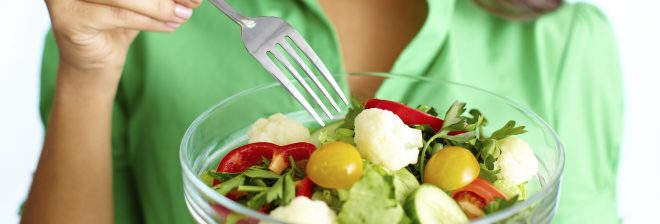
Clinic News
It looks like summer has arrived and the TV channels are full of sports -Wimbledon, Tour de France, the Lions Tests and more! We hope it inspires you to get out and get active yourself; listen to your body and book in at the clinic if you have any niggles!
The clinic is very busy and now we are entering holiday season; please double check before you leave that you're not booked in for an appointment that you won't make.
The chiropractors also have holidays booked and as a result there are limited appointments over the next few weeks, please cancel as soon as possible if you are not going to be able to attend to open up space for someone in need. The receptionists will be operating a cancellation list and we will do our very best to get you in as soon as we can!

Anne Naylor
Its with great sadness we report that the lovely Anne who worked on reception for us for several years (retiring back in 2009) passed away last month.
No doubt many of you have fond memories of such a wonderful lady who always had a smile for everyone and will join us in sending our deepest sympathies to her husband Dave and their family.
We were fortunate to spend time with Anne recently when we celebrated Lyn's retirement, it was lovely to catch up with her and we will remember her fondly.
(Anne and Dave -Christmas 2008).

Summertime Running
Summertime is here and with it, for many, comes the desire to don a pair of trainers and hit the road for a run.
If you are new to running why not try the NHS podcasts for couch to 5Km http://www.nhs.uk/livewell/c25k/Pages/couch-to-5k.aspx or join a running club.
Here’s how not to make it a troublesome one for your joints and muscles…
The finer weather might be incentive to keep on running longer than usual and push your body that little bit more. While good for reaching your ultimate running goal, pushing your body too hard might result in unwanted injuries.
Listen to your body’s natural resistance and follow these tips for a safe and effective wind down after your run:
Don’t Stop Moving
Keep gently mobile right after your run. Try regular walking for 5-10 minutes; it might be the last thing you feel like after running a few miles but remaining static should be avoided at all costs to avoid injuries.
Ice
Applying ice to specific injuries such as problems with joints is highly recommended. This is most effective when the ice is applied immediately after a run but still works when applied a few days following.
Heat
Taking a hot bath after a long run is ideal for strained muscles. It also helps with overall rejuvenation and relaxation which is often needed after a strenuous or draining stretch.
Food For Thought
What we put in our bodies pre and post run is particularly important. Snack regularly, ideally on something that is high in carbohydrates, low in fat, which contains some protein. A tuna sandwich is ideal. Ensuring you drink lots of fluids is also another very important factor for runners to remember. Water is of course an excellent choice when it comes to keeping well hydrated but there are plenty of other options out there, too, such as sports drinks and gels. Remember: after finishing your run, always refrain from drinking alcohol until fully rehydrated.

Mattress Matters
Could your mattress be the cause for your back pain? It’s time for a change!
While buying a new mattress can be a costly investment, it is important to take note of the signs that it needs replacing to reduce back and neck pain which can be triggered by a bad mattress. This is usually down to people only changing their mattress once every ten years, despite recommendations to do so every seven years, as advised by venerable sources such as the Sleep Council.
How often you change a mattress depends on lots of factors, including your weight and how well you care for your mattress. As soon as your mattress stops supporting your back, know that it’s time to get a new one.
5 signs that it’s time to change your mattress:
- You wake up feeling stiff or aching.
- You had a better night’s sleep somewhere else.
- Your mattress is misshapen or sagging.
- Your mattress creaks when you move.
- You can feel individual springs.
4 factors to remember when choosing a new mattress:
- Choose a mattress that supports your weight; a heavier person will need a more supportive mattress than someone who is lighter in weight.
- Test your mattress before buying; your spine should be parallel to the mattress when lying on your side. Make sure your spine doesn’t sag, as this is a sign your mattress is too soft, or bow, as this is a sign that it’s too hard.
- When selecting a suitable pillow, make sure it allows your neck to become a continuation of the straight spine created by your well-suited mattress, making sure that your neck neither too high or too low.
- If you share a bed with your partner, make sure they are with you at the time of purchasing your mattress. Your ideal mattress tensions could be different. If this is the case, try buying from a range that allow two single mattresses to be zipped together so that you both get the support you need.
Why not pick up one of the leaflets in the clinic full of tips on choosing a new bed or go to the clinic website and watch our video: http://www.beestonchiropractic.co.uk/vid-new-bed/

Nutrition for Bones, Muscles and Joints
Choosing a balanced diet containing the right vitamins and minerals decreases our chances of developing deficiencies later on in life. The body’s structure relies on vitamins and minerals to ensure muscle tone (including the heart), healthy functioning of nerves; correct composition of body fluids; and the formation of healthy blood and bones.
A Healthy Diet Plan
Calcium
For bone, muscle and joint health try and include Calcium in your diet, which is essential for optimal nerve and muscle function and blood clotting.
Obtained from
Dairy products are rich in calcium that is easy to absorb. Non – dairy sources with equally absorbable calcium are green leafy vegetables from the kale family. Spinach, rhubarb, sweet potatoes and dried beans are rich in calcium but from these foods it’s not easily absorbed
Magnesium
Required for efficient muscle contraction and conduction of nerve impulses. Low magnesium levels in the body can affect the body’s calcium levels, putting bone health at risk.
Obtained from
Green leafy vegetables, unrefined grains and nuts. Small amounts are present in meat and milk. Large quantities of fibre in the diet and low protein intake can reduce the amount of magnesium able to be absorbed by the body.
Vitamin D
Essential for regulating the formation of bone and the absorption of calcium from the intestine. Vitamin D is a fat-soluble vitamin that functions to help control the movement of calcium between bone and blood.
Obtained from
Primarily from the action of UVB light on the skin. Food sources such as cod liver oil, sardines, salmon, tuna, milk and milk products contain small amounts of Vitamin D.
Vitamin C
The structure of bones, cartilage, muscles and blood vessels is provided in part and maintained by collagen. The formation of strong efficient collagen requires Vitamin C.
Obtained from
Citrus fruits, berries, tomatoes, cauliflower, potatoes, green leafy vegetable and peppers. Also important for producing strong collagen and therefore strong bone structure, is Folic acid. Folic acid is found in cereals, beans, green leafy vegetables, orange and orange juice
Antioxidants
Vitamin C is also a strong antioxidant and is capable of regenerating other antioxidants like vitamin E. The role of antioxidants is to mop up free radicals (the by-products of normal metabolism). Excessive amounts of free radicals cause damage to joint surfaces and muscle cell regeneration. Antioxidants reduce the potential of these free radicals to cause joint damage.
Obtained from
Antioxidants are vitamins A, C, E and the mineral selenium and are present in fruits and vegetables, the highest quantities are found in the most deeply and brightly coloured. Cartilage that lines the articulating surfaces of all joints is critical to joint health. Cartilage is the shock absorber of joints and is continually rebuilt if a source of raw materials is available. Supplements such as glucosamine sulphate can be added to a healthy diet to assist joints that maybe showing signs of wear and tear.
Essential fatty acids
Essential fatty acids (EFA’s) also reduce the degenerative changes in tissues and cells. EFA’s are unsaturated fatty acids such as Omega 3. They aid in decreasing the inflammatory response and help relieve pain and discomfort in joints and muscles.
Obtained from
EFA’s can be found in oily fish (sardines, fresh tuna, mackerel), flax seed and linseed.
Foods to avoid…
There are certain foods and substances that adversely effect the body’s use of minerals and vitamins. High saturated/animal fats, refined foods, white flour, white sugar, white rice, chocolate, carbonated drinks and fruit juices with high sugar concentration should be kept to a minimum if not weaned from the diet completely. Meat and dairy products should be kept within a recommended weekly amount. Dairy products as calcium sources should be varied with other non-dairy sources.
We treat all conditions that affect any muscle or joint in your body, from your head to your little toe! One of the most common complaints that we treat is back pain and Chiropractic is recommended by the government authority, the National Institute for Clinical Excellence (NICE) for acute and chronic back pain. Some of the other conditions that we treat are neck and headache, shoulder pain, leg and hip pain, knee and foot pain, sciatica and arthritis. Our registered Chiropractors all have at least five years of training. Treatment costs can be covered through most health insurers. If you are in any doubt, we are always very happy to talk with you on the phone to see if your condition will respond well to Chiropractic treatment. Call the clinic now to arrange an appointment time that works for you. 0115 9225085 If you would like to opt-out of receiving these newsletters please follow the unsubscribe link below, email alex@beestonchiropractic.co.uk or let us know at your next appointment.





